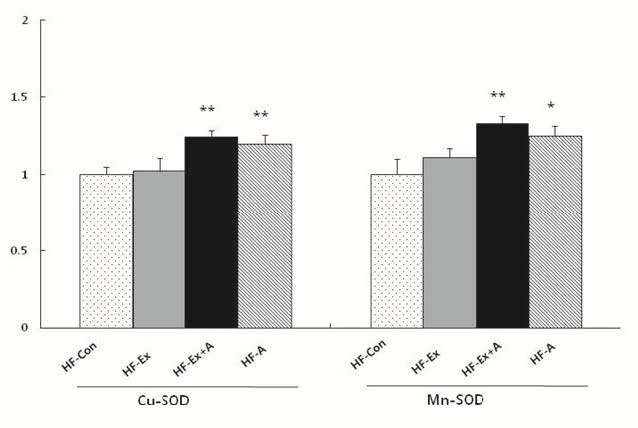2. Sutton-Tyrrell K., Newman A., Simonsick EM., Havlik R., Pahor M., Lakatta E., et al. Aortic stiffness is associated with visceral adiposity in older adults enrolled in the study of health, aging, and body composition. Hypertension 2001;38:429-33. PMID:
10.1161/01.HYP.38.3.429. PMID:
11566917.


3. Police SB., Thatcher SE., Charnigo R., Daugherty A., Cassis LA.. Obesity promotes inflammation in periaortic adipose tissue and angiotensin II-induced abdominal aortic aneurysm formation. Arterioscler Thromb Vasc Biol 2009;29:1458-64. PMID:
10.1161/ATVBAHA.109.192658. PMID:
19608970.



4. Rider OJ., Tayal U., Francis JM., Ali MK., Robinson MR., Byrne JP., et al. The effect of obesity and weight loss on aortic pulse wave velocity as assessed by magnetic resonance imaging. Obesity (Silver Spring) 2010;18:2311-6. PMID:
10.1038/oby.2010.64. PMID:
20360756.


5. Rider OJ., Lewis AJ., Neubauer S.. Structural and Metabolic Effects of Obesity on the Myocardium and the Aorta. Obes facts 2014;7:329-38. PMID:
10.1159/000368429. PMID:
25342107.



6. Milovanovic ES., Obradovic M., Jovanovic A., Zaric B., Zafirovic S., Panic A., et al. Benefits of L-Arginine on cardiovascular system. Mini Rev Med Chem. 2015.
7. Cylwik D., Mogielnicki A., Buczko W.. L-arginine and cardiovascular system. Pharmacol Rep 2005;57:14-22. PMID:
15849373.

8. Giugliano D., Marfella R., Verrazzo G., Acampora R., Nappo F., Ziccardi P., et al. L-arginine for testing endothelium-dependent vascular functions in health and disease. Am J Physiol 1997;273:E606-12. PMID:
9316452.


9. Gryglewski RJ., Grodzinska L., Kostka-Trabka E., Korbut R., Bieroon K., Goszcz A., et al. Treatment with L-arginine is likely to stimulate generation of nitric oxide in patients with peripheral arterial obstructive disease. Wien Klin Wochenschr 1996;108:111-6. PMID:
8867484.

11. Deley G., Kervio G., Van Hoecke J., Verges B., Grassi B., Casillas JM.. Effects of a one-year exercise training program in adults over 70 years old: a study with a control group. Aging Clin Exp Res 2007;19:310-5. PMID:
10.1007/BF03324707. PMID:
17726362.



12. Lee J., Cho HS., Park S., Kim WK.. Regular exercise produced cardioprotective effects on rat’s heart with hypertension induced by L-NAME administration. Clin Exp Hypertens 2009;31:364-75. PMID:
10.1080/10641960902977924. PMID:
19811364.


13. Hambrecht R., Adams V., Erbs S., Linke A., Krankel N., Shu Y., et al. Regular physical activity improves endothelial function in patients with coronary artery disease by increasing phosphorylation of endothelial nitric oxide synthase. Circulation 2003;107:3152-8. PMID:
10.1161/01.CIR.0000074229.93804.5C. PMID:
12810615.


14. Jia B., Wang X., Kang A., Wang X., Wen Z., Yao W., et al. The effects of long term aerobic exercise on the hemorheology in rats fed with high-fat diet. Clin Hemorheol Microcirc 2012;51:117-27. PMID:
22240376.


15. Kim SY., Lee J.. Exercise Training suppresses vascular fibrosis in aging obesity induced rats. J Exerc Nutrition Biochem 2014;18:175-80. PMID:
10.5717/jenb.2014.18.2.175.



16. Bradford MM.. A rapid and sensitive method for the quantitation of microgram quantities of protein utilizing the principle of protein-dye binding. Anal Biochem 1976;72:248-54. PMID:
10.1016/0003-2697(76)90527-3. PMID:
942051.


17. Quan Y., Qian MZ.. Effect and mechanism of gypenoside on the inflammatory molecular expression in high-fat induced atherosclerosis rats. Zhongguo Zhong Xi Yi Jie He Za Zhi 2010;30:403-6. PMID:
20669679.

18. Kypreos KE., Zafirovic S., Petropoulou PI., Bjelogrlic P., Resanovic I., Traish A., et al. Regulation of endothelial nitric oxide synthase and high-density lipoprotein quality by estradiol in cardiovascular pathology. J Cardiovasc Pharmacol Ther 2014;19:256-68. PMID:
10.1177/1074248413513499. PMID:
24414281.


19. Dobutović B., Smiljanić K., Soskić S., Düngen H-D., Isenović ER.. Nitric Oxide and its Role in Cardiovascular Diseases. Open Nitric Oxide J 2011;3:65-71. PMID:
10.2174/1875042701103010065.

20. Grisham MB., Jourd’Heuil D., Wink DA.. Nitric oxide. I. Physiological chemistry of nitric oxide and its metabolites:implications in inflammation. Am J Physiol 1999;276:G315-21. PMID:
9950804.

22. Dalsgaard T., Kroigaard C., Simonsen U.. Calcium-activated potassium channels - a therapeutic target for modulating nitric oxide in cardiovascular disease? Expert Opin Ther Targets 2010;14:825-37. PMID:
10.1517/14728222.2010.500616. PMID:
20560781.


23. Bode-Boger SM., Scalera F., Ignarro LJ.. The L-arginine paradox: Importance of the L-arginine/asymmetrical dimethylarginine ratio. J Pharmacol Exp Ther 2007;114:295-306. PMID:
10.1016/j.pharmthera.2007.03.002.

24. Wu G.. Intestinal mucosal amino acid catabolism. J Nutr 1998;128:1249-52. PMID:
9687539.



25. Tousoulis D., Antoniades C., Tentolouris C., Goumas G., Stefanadis C., Toutouzas P.. L-arginine in cardiovascular disease: dream or reality? Vasc Med 2002;7:203-11. PMID:
10.1191/1358863x02vm434ra. PMID:
12553744.


27. Palmer RM., Ashton DS., Moncada S.. Vascular endothelial cells synthesize nitric oxide from L-arginine. Nature 1988;333:664-6. PMID:
10.1038/333664a0. PMID:
3131684.



29. Napoli C., Ignarro LJ.. Nitric oxide and pathogenic mechanisms J Exerc Nutrition Biochem. 2016;20(1):xxx-xxx, http://dx.doi.org/10.20463/jenb.2016.03.20.1.6 5 Exercise and arginine in vascular inflammation Journal of Exercise Nutrition & Biochemistry involved in the development of vascular diseases. Arch Pharm Res 2009;32:1103-8. PMID:
19727602.



32. Yang Z., Ming XF.. Arginase: the emerging therapeutic target for vascular oxidative stress and inflammation. Front Immunol 2013;4:149PMID:
10.3389/fimmu.2013.00149. PMID:
23781221.



33. Yang Z., Lüscher TF.. Vascular Endothelium. In:Lanzer P. eds Topol EJ. PanVascular Medicine. Berlin, Germany: Springer Verlag Berlin Heidelberg. 2002. p. 190-204. PMID:
10.1007/978-3-642-56225-9_11.
34. Hansson GK., Hermansson A.. The immune system in atherosclerosis. Nat Immunol 2011;12:204-12. PMID:
10.1038/ni.2001. PMID:
21321594.



35. Ozata M., Mergen M., Oktenli C., Aydin A., Sanisoglu S., Bolu E., Yilmaz M., Sayal A., Isimer A., Ozdemir I.. Increased oxdative stress and hypozincemia in male obesity. Clin Biochem 2002;35:627-631. PMID:
10.1016/S0009-9120(02)00363-6. PMID:
12498997.












